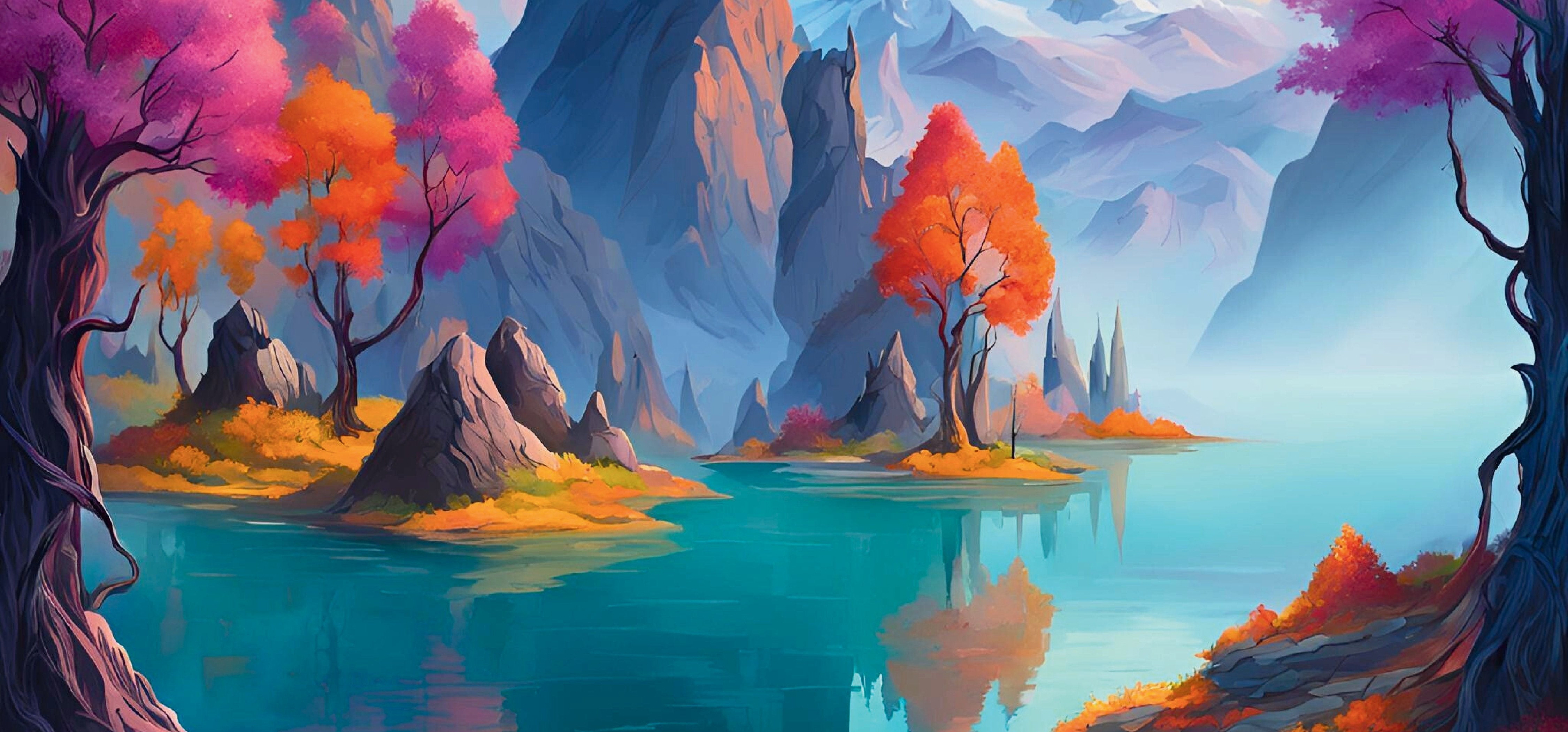
Jan 2025
Surrealism, as an art movement of the 20th century, stimulated the imagination in revolutionary ways and blurred the boundaries between reality and fantasy. Artists such as Salvador Dalí, René Magritte, and Max Ernst created works that combined the unconscious, the dreamlike, and the illogical. These movements not only shaped painting but also influenced other art forms, including literature, film, and photography.
But how does surrealism continue in the digital age? And how does digital art transform surrealist expression by uniting fantasy and reality in a new way?
In this blog post, we take a look at how digital art is reinterpreting surrealism by further blurring the lines between dream and reality and creating innovative visual worlds.
1. THE DIGITAL TRANSFORMATION OF SURREALISM
Digital art has enabled artists to expand their surrealist visions in innovative and fascinating ways. The transition from traditional painting to digital media has opened up new dimensions for surrealism. With digital tools and software, artists can overcome the limitations of traditional techniques and transform their imaginations into unprecedented, hyperrealistic scenarios.
While surrealist painting once relied on the skill of a brush and physical media, digital artists today can create an unlimited spectrum of textures, colors, and shapes. This freedom means that even the strangest and most unattainable ideas can become reality. A scene in which mountains float, eyes bubble in the sky, or time exists in the form of flowing clocks becomes accessible and practically realizable through digital art.
2. LIMITLESS CREATIVITY: FUSION AND REALITY MERGE
In digital art, there are no physical boundaries, bringing surrealist concepts to life with even greater intensity and detail. While surrealist painting often retains a certain "rawness" in its depictions, digital art allows for the integration of hyperrealistic details into fantastical scenarios. A mountain can be given a texture reminiscent of something living, a distorted image can be so finely crafted that it almost dissolves the boundaries between dream and reality.
Digital effects such as 3D modeling, animation, or augmented reality (AR) can also make these surreal worlds interactive. Instead of simply looking at an image, viewers can immerse themselves in a constantly changing surreal landscape—a fascinating step from static image viewing to an immersive experience.
3. FANTASY AND DREAM WORLD: NEW PERSPECTIVES FOR SURREALISM
Digital art not only enables the merging of fantasy and reality, but also the manipulation of perspective. While artists in traditional surrealism often worked with distorted perspectives to create the illusion of dream worlds, digital art enables an even more complex manipulation of perception. For example, landscapes can seemingly merge into themselves, celestial bodies can merge into one another, or time can be distorted in a spiral motion.
Another tool of digital art is the ability to combine elements from different eras and worlds. A digital collage, for example, can blend classical architecture with futuristic elements, opening up new, surreal spaces with a blend of past, present, and future.
4. THE INFLUENCE OF SURREALISM ON THE DIGITAL ART SCENE
Today's digital artists take surrealist ideas and transform them into a wide range of works of art. They combine realistic depictions with dream-world elements, employ strong contrasts, and distort familiar forms to fuel the imagination. The use of software such as Photoshop, Procreate, Blender, or Cinema 4D allows them to create realistic images that are, however, never fully explainable or tangible. This shifted perception of "reality" is at the core of surrealism and makes digital surrealism so captivating and fascinating.
Artists who create digital surrealist art often experiment with visual paradoxes: things that seem impossible in the real world can exist in a digital surrealist landscape. These works invite the viewer to immerse themselves in a world that doesn't provide clear answers, but rather challenges the imagination and explores the limits of the mind .
Bring your digital art into reality!
Now that you've learned more about the fascinating possibilities of digital AI art, it's time to experience your favorite artwork in physical form. Explore our various printing options —whether on acrylic glass, photo paper, metal, etc.—and choose the perfect option to make your artwork shine.
Browse our product gallery , find the artwork that appeals to you most, and bring it to life in a high-quality print.
Do you still have questions? In our FAQ section, you'll find frequently asked questions and answers about AI art.
Discover, select and enjoy your art in the perfect form!
Conclusion
Digital surrealism opens up a whole new world of artistic possibilities. Using digital tools, artists can create surreal worlds so realistic and detailed that they almost deceive the senses—yet so outlandish that they transport us into the realm of dreams and the unconscious. Fantasy and reality merge in a way that would never have been possible through traditional media.
Whether in digital painting, 3D animation, or even virtual and augmented realities, surrealism lives on in digital art by transforming the unimaginable into a tangible, visual form. Imagination is no longer limited by the constraints of the physical medium, allowing artists to create entirely new dream worlds.
If you're interested in surrealist digital art, now is the perfect time to explore its limitless possibilities. The fusion of fantasy and reality is an exciting chapter in art history that takes on even greater expressive power in the digital era.
